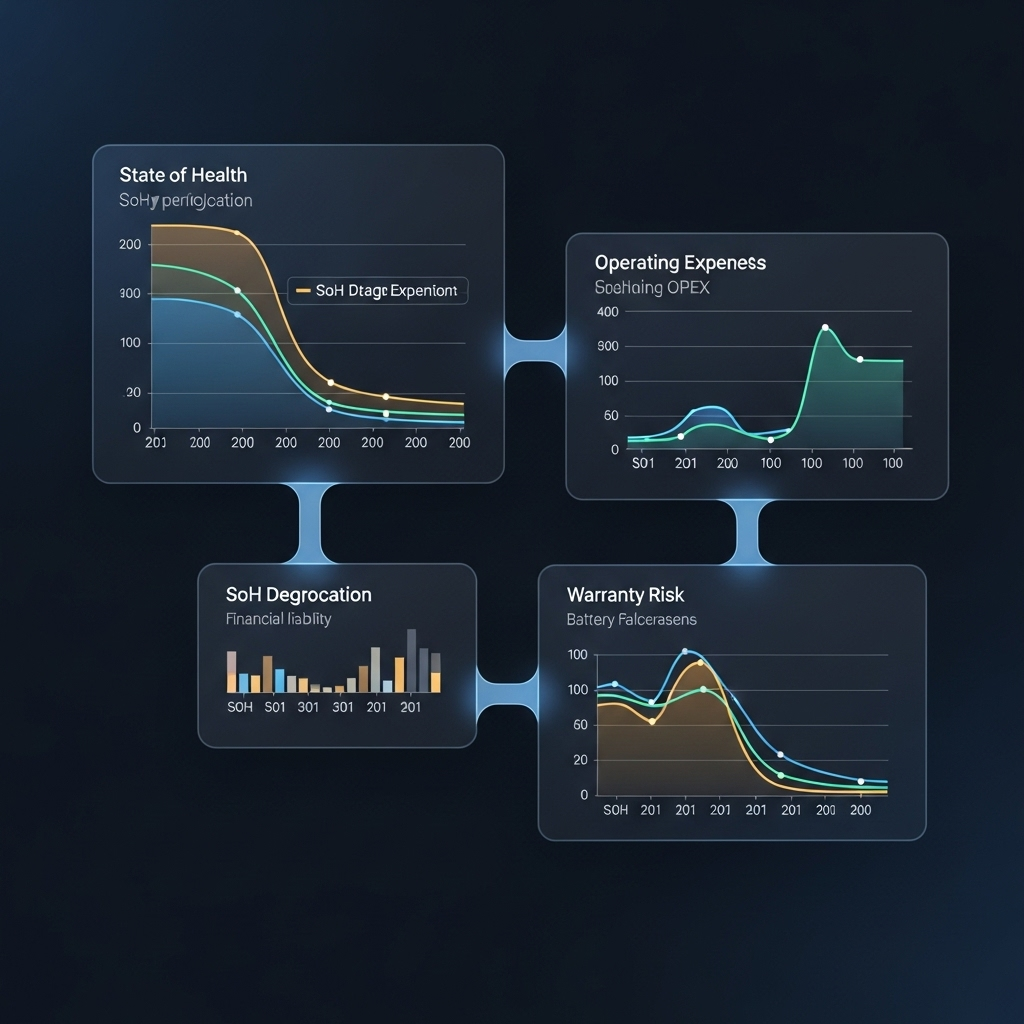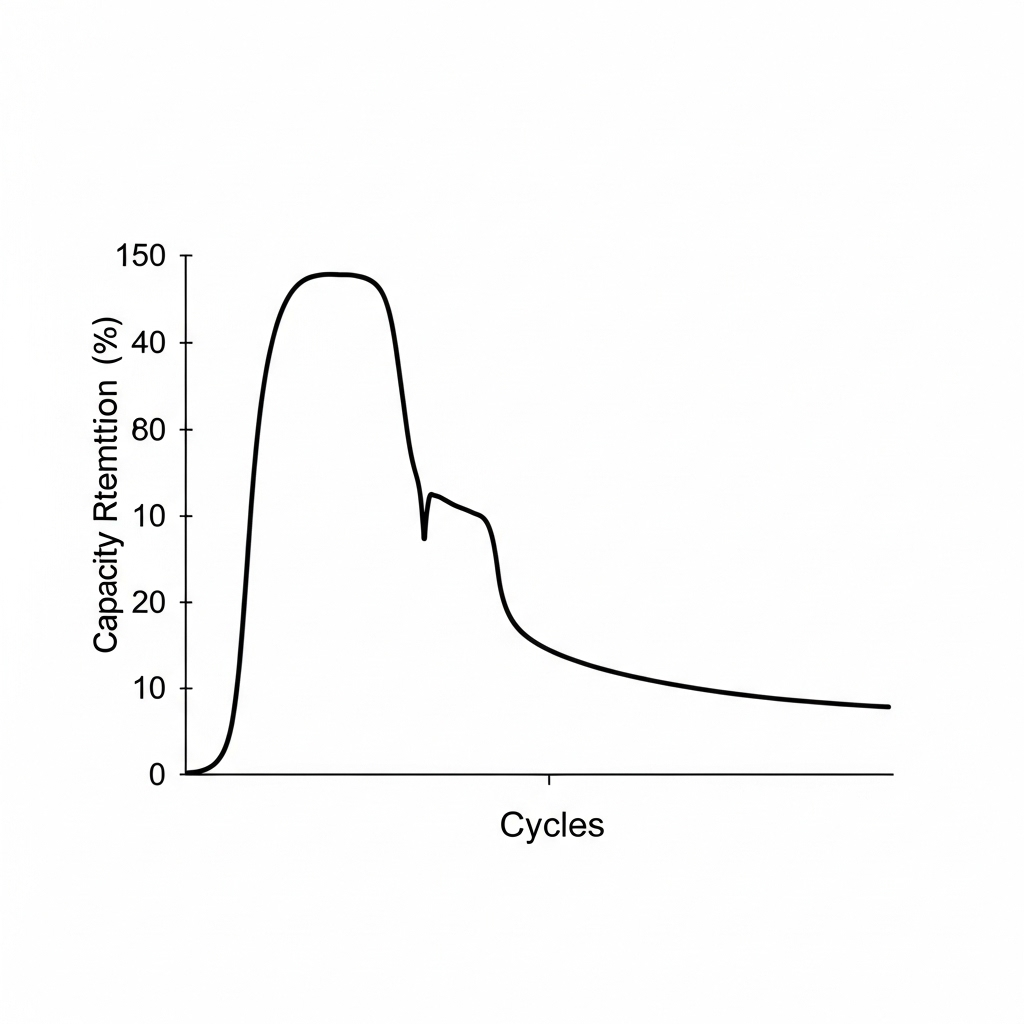Predicting the lifespan of a Lithium Iron Phosphate (LFP) battery in an energy storage system (ESS) is not as simple as looking at a manufacturer's datasheet. Standard cycle life ratings are based on controlled, consistent lab conditions. A real-world solar duty cycle is anything but consistent. It involves fluctuating solar generation, unpredictable home energy loads, and varying environmental temperatures. Accurately modeling this complex reality is fundamental to designing a reliable system, setting realistic expectations, and maximizing your return on investment.
This detailed explanation breaks down how to build a practical and effective cycle life model for an LFP ESS that accounts for the unique stresses of daily solar operation. You will gain a clear understanding of the critical factors at play and how to integrate them into a cohesive predictive framework.
Beyond the Datasheet: Why Solar Duty Cycles Are Different
A battery's performance in a solar installation is governed by a unique set of operating conditions that differ significantly from standardized testing protocols. Understanding these differences is the first step toward accurate life prediction.
The Irregularity of Solar Generation and Load
Unlike a lab test that uses a constant charge and discharge current, a solar ESS operates in a dynamic environment. Solar panel output changes with the time of day, weather, and season. Similarly, household electricity consumption is sporadic, with peaks in the morning and evening and lulls in between. This results in the battery undergoing countless partial charges and discharges, often called micro-cycles. These irregular patterns are far from the full charge-discharge cycles used to generate simple cycle-life curves.
The Impact of Partial State of Charge (SoC) Cycling
LFP chemistry is known for its resilience to partial cycling. A full 100% depth of discharge (DoD) cycle puts more stress on a battery than two separate 50% DoD cycles. A solar duty cycle is composed of numerous shallow cycles. To properly account for their cumulative effect, a sophisticated method is needed. The 'rainflow-counting' algorithm is a widely used engineering technique that can analyze a variable load history and break it down into a series of discrete, quantifiable cycles. This allows for a much more precise calculation of cycling-related degradation than simply counting how many days the system has been in operation.
Building a Robust LFP Degradation Model
A comprehensive model must account for the primary mechanisms of battery degradation: cycling aging, calendar aging, and the accelerating effect of temperature. Neglecting any of these components will lead to inaccurate predictions.
Modeling Cycling Aging
Cycling aging is the degradation caused by charging and discharging the battery. The two main inputs for this part of the model are Depth of Discharge (DoD) and C-rate. While higher C-rates (faster charging/discharging) can increase stress, most residential ESS applications operate at low C-rates (typically below C/4), making DoD the dominant factor. Deeper cycles consume more of the battery's life than shallower ones. A lookup table, based on manufacturer data or independent testing, can quantify this relationship.
| Depth of Discharge (DoD) | Equivalent Full Cycles | Relative Stress Factor |
|---|---|---|
| 100% | ~3,000 - 5,000 | 1.00 |
| 80% | ~6,000 - 8,000 | 0.50 |
| 50% | ~10,000 - 15,000 | 0.25 |
| 20% | >15,000 | <0.10 |
Note: These are illustrative values. Actual performance varies by cell chemistry and quality.
Factoring in Calendar Aging
Calendar aging is the degradation that occurs while the battery is idle. It is a persistent, silent process driven primarily by two conditions: the battery's State of Charge (SoC) and its temperature. LFP batteries degrade faster when stored at a high SoC and at elevated temperatures. In a typical solar installation, the battery is often fully charged by early afternoon and remains at a high SoC for several hours until the sun sets. This makes calendar aging a particularly significant contributor to overall capacity loss, one that is often underestimated.
The Critical Role of Temperature
Temperature is an accelerator for both cycling and calendar aging. High ambient temperatures speed up the unwanted chemical side reactions inside the battery, leading to faster capacity fade and an increase in internal resistance. Conversely, charging an LFP battery at temperatures near or below freezing can cause lithium plating, a potentially dangerous condition that permanently damages the cell. An effective model must use temperature data—either real or simulated—to adjust the degradation rates for both calendar and cycling effects. As noted in the Solar PV Global Supply Chains report by the IEA, managing the operational integrity of all system components is vital for long-term project success and reliability.
From Theory to Application: A Step-by-Step Modeling Process
With an understanding of the core components, you can assemble them into a practical workflow to simulate battery life under a specific solar duty cycle.
Step 1: Gather Real-World Data
The foundation of a good model is good data. You need a time-series dataset of solar production and electricity consumption, ideally at 15-minute or hourly intervals for at least one full year. This captures seasonal variations in both generation and load. If historical data is unavailable, tools from energy agencies can generate realistic, location-specific solar profiles that serve as a strong starting point.
Step 2: Simulate Battery Operation
Using your time-series data, you can simulate the battery's SoC over time. This is an iterative energy balance calculation for each interval: New SoC = Previous SoC + (Solar Generation - Home Load) * Interval Duration - System Losses. It is important to include realistic efficiency losses for the inverter and the battery itself (round-trip efficiency). This simulation will produce a detailed SoC profile that reflects how the battery would actually be used day-to-day.
Step 3: Apply a Degradation Model
With the simulated SoC profile, you can now calculate the cumulative degradation. For each time step, you calculate and sum the capacity loss from two sources:
- Calendar Aging: Based on the average SoC and temperature during the interval.
- Cycling Aging: First, use the rainflow-counting algorithm on the full SoC profile to identify all the partial cycles and their respective depths. Then, use a DoD-to-damage function (like the one illustrated in the table above) to calculate the total cycling damage.
Combining these two sources of degradation provides a holistic view of battery health over time. A deep dive into the specifics of battery metrics, such as those covered in the Ultimate Reference for Solar Storage Performance, can help validate that your model's outputs align with established performance indicators.
Using Model Insights to Optimize System Design and Operation
A robust model is more than an academic exercise; it is a powerful tool for making practical, value-driven decisions about your energy storage system.
Optimizing the SoC Operating Window
The model can clearly demonstrate the trade-off between daily usable energy and long-term battery health. You can run simulations with different SoC limits—for example, capping the maximum charge at 95% and setting the minimum discharge level at 15%. Often, a small reduction in the daily operational window can yield a substantial increase in projected lifespan, significantly improving the system's lifetime value. As the International Renewable Energy Agency (IRENA) highlights in its Renewable Power Generation Costs in 2024 report, accurately modeling battery dispatch and operation is essential to capture its full value within an energy system.
Sizing Your Battery Correctly
Modeling helps you size the ESS correctly from the start. An undersized battery will be subjected to frequent deep discharges, leading to premature failure. An oversized battery represents wasted capital and may suffer more from calendar aging, as a smaller portion of its capacity is used daily. The model allows you to find the sweet spot where the battery meets your energy needs while operating in a healthy, life-extending manner. This aligns with broader industry goals for sustainability, such as creating a circular economy for energy technologies, where resource optimization and extended product life are paramount.
The Value of Accurate Modeling
Relying on a simple cycle count from a datasheet is inadequate for forecasting the lifespan of an LFP battery in a solar ESS. The reality of variable solar duty cycles demands a more sophisticated approach. By building a model that integrates irregular partial cycling, calendar aging, and the effects of temperature, you can create a far more accurate prediction of long-term performance. This data-driven approach empowers you to design better systems, manage them more intelligently, and ultimately secure a greater return on your energy investment.
Frequently Asked Questions
What is the most significant factor in LFP battery degradation for solar use?
It is a combination of factors. While Depth of Discharge (DoD) from cycling is important, calendar aging driven by high temperatures and prolonged high State of Charge (SoC) is equally critical in solar applications where the battery is often full by midday.
Can I use a simple cycle count from the manufacturer's datasheet?
A simple cycle count is a poor predictor for solar duty. Datasheets typically use full, consistent cycles (e.g., 80% or 100% DoD). Real-world solar use involves many small, irregular partial cycles, which are less damaging. A proper model is needed to account for this.
What is the 'rainflow-counting' algorithm?
It is a standard engineering algorithm used to analyze fatigue data. In battery modeling, it deconstructs a variable load profile (like a solar duty cycle) into a set of simple, discrete charge/discharge cycles of varying depths. This allows for a more accurate calculation of cumulative cycling damage.
How much does temperature affect LFP battery life?
Temperature is a major accelerator of degradation. As a general rule, for every 10°C (18°F) increase above the optimal range (around 25°C or 77°F), the rate of chemical degradation can roughly double. This affects both calendar and cycling aging.
Is a higher C-rate always bad for my battery?
Not necessarily, but it requires management. High C-rates (fast charging/discharging) generate more internal heat and can put mechanical stress on electrode materials, accelerating degradation. LFP chemistry is generally robust, but most residential solar applications operate at low C-rates (e.g., C/5 or lower), so it is often a less dominant factor than temperature or SoC.





Leave a comment
All comments are moderated before being published.
This site is protected by hCaptcha and the hCaptcha Privacy Policy and Terms of Service apply.